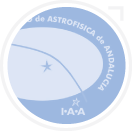WP03. Aerosol-free surface reflectance
General Objectives:
- Quantify the the surface reflectance corrected from the atmospheric scattering and photometric effects from the OMEGA visible and near-IR spectra
- Study the impact of the aerosol-free reflectance maps on the minerology studies
- Monitor seasonal/annual changes in surface albedo due to dust redistribution
Responsible:
F. Altieri (INAF)
Participants:
INAF, ORB
Scientific Background:
The surface of a planet contains information of its evolution. Variations in surface composition are caused by internal activity, meteoritic impacts and atmosphere interaction. Abundant knowledge of Mars' surface composition has been acquired from recent space VIS and IR measurements. Nanophasic iron oxides and mafic mineral assemblages, indicative of basaltic rocks, are typical of bright and dark terrains, respectively. Phyllosilicate and sulphate mineral have been observed on local deposits, mainly on ancient regions. The identification of hydrated minerals (e.g. phyllosilicates-bearing deposits) on Mars provides information about its aqueous history and is important evidence that liquid water was present on the surface or in the subsurface in the early history of the planet. Read more.
Scientific Impacts:
The new surface reflectance corrected for the atmospheric impact (including aerosols and dust) will improve the investigation of the surface and will provide a better way to isolate the aerosols, dust and clouds contributions. It will be a reference for the treatment of nadir data of ExoMars TGO and for mineralogical studies.

































